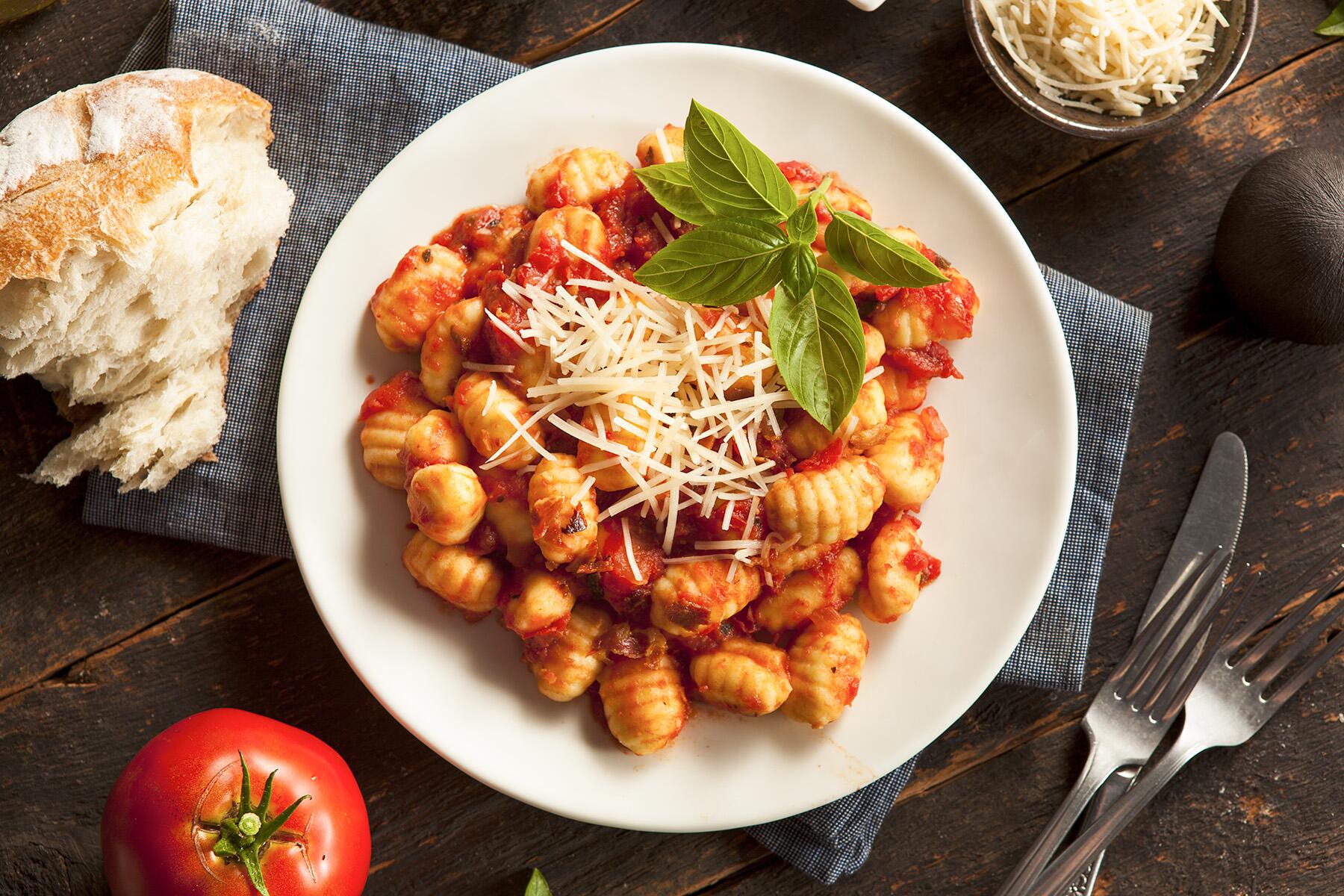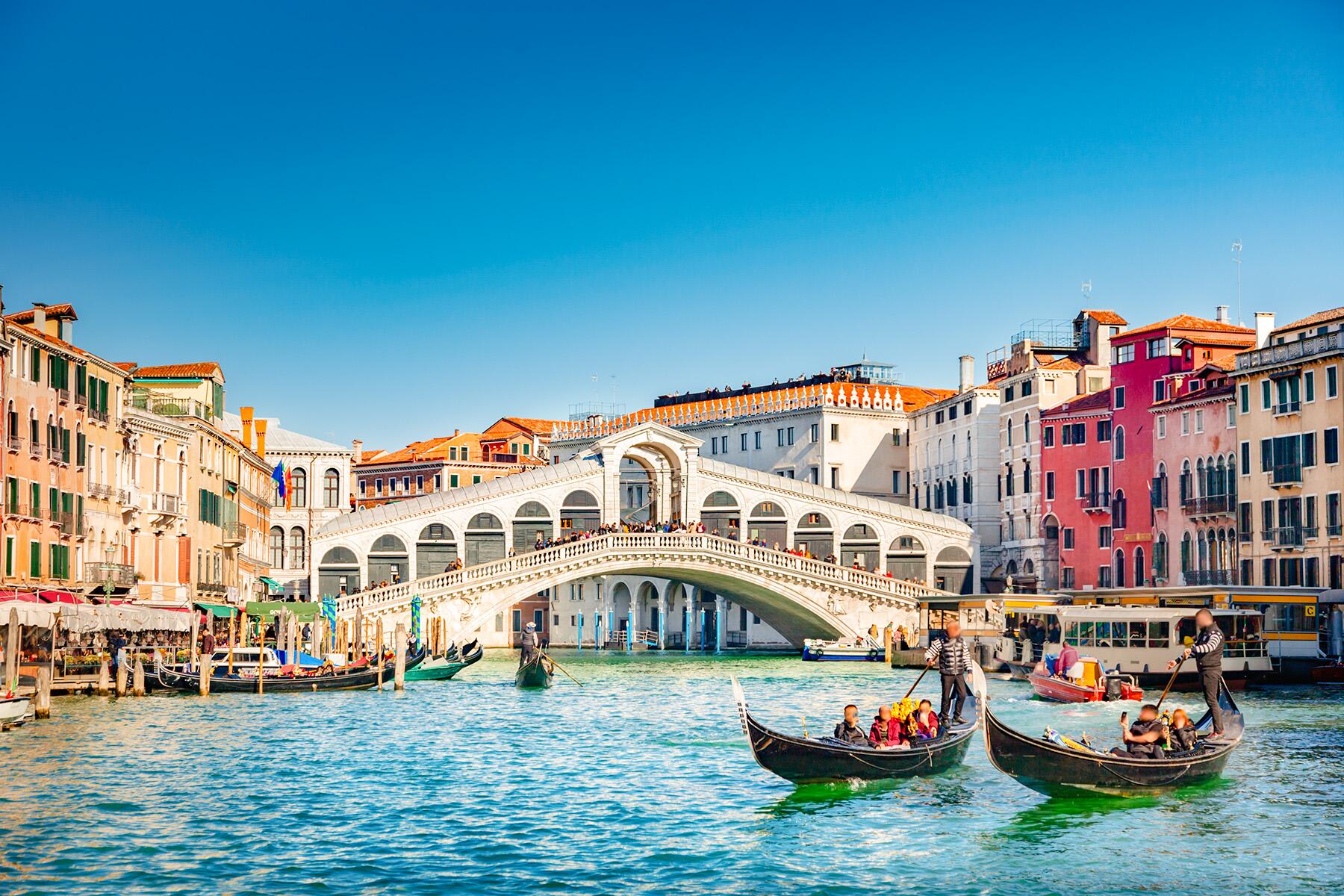How to enjoy Venice like a local and not like a tourist.
Venice is a beautiful, beguiling city that has moved travelers and inspired artists for centuries. But with the overwhelming visitor numbers that now flood the city, it is also notoriously difficult for tourists to navigate.
My first few years in the city were a struggle as I figured out the overpriced restaurants to avoid and how to best escape the crowds. But after a decade of walking along side streets, dipping into unassuming bars, and lapping up local recommendations, I’ve come to discover there’s a version of Venice where you can avoid tourist traps and throngs of tourists. Here’s how to enjoy Venice like a true local.
Swap an Aperol Spritz for a Venetian Select
Tangerine-toned Aperol spritz has become synonymous with summer vacations in Italy. The Veneto region, of which Venice is the capital, is the biggest consumer of the vibrant drink. But the bitter Aperol was invented in the city of Padua, about an hour from Venice. If you want to enjoy an aperitif like a Venetian, ask for Select in your spritz instead. This bitter was first produced in the canal city in 1919. It is more herbaceous than its orange counterpart and ruby in color. Don’t be disappointed if it arrives in a tumbler rather than a showy wine glass, as this is how it was originally drunk before the days of Instagram.
Find Free Art in Churches
Many visitors rightly make a beeline for the Gallerie dell’Accademia to see the finest art in Venice. This blockbuster gallery is home to iconic works by Vittorio Carpaccio and Giovanni Bellini. But with a pricey entrance fee and long queues in summer, I prefer to dip in and out of cool, empty churches that hide myriad masterpieces. The church of San Zaccaria, just behind St. Mark’s Square, is home to an exquisite, jewel-colored altarpiece by Giovanni Bellini. Another of the Renaissance master’s works is found in the church of San Pietro Martire on the glass-making island of Murano. The church of San Giorgio Maggiore, by renowned architect Andrea Palladio, houses two vast canvases by Venetian art heavyweight Jacopo Tintoretto.
Recommended Fodor’s Video
Eat Finger Food for the Best Meal in Venice
There are plenty of excellent restaurants in Venice, but it does require some research to find them. For a quick and easy dinner that won’t break the bank, hit the bars instead, such as those that line the Fondamenta della Misericordia canal. Called bacari in the city, these small establishments are known for serving cicchetti, or little bites of food. These can be anything from slices of crusty bread with sarde in saor (fried sardines in an onion and vinegar sauce) to deep-fried mozzarella. You’ll pay around $2 to $3 for each cicchetto, so you can fill up easily on a budget.
Skip Overpriced Gondolas
Sleek black gondolas and their striped-shirted gondoliers are integral to Venice’s history. But in summer, a ride on one of these boats means paying a hefty fee to be punted around the same routes as all other tourists and often ending up in traffic jams. To really feel like you’ve experienced Venice, try navigating a boat yourself. With companies like Row Venice and Venice on Board, you can join an English-speaking rowing lesson where you learn to punt standing up in the Venetian manner and see some quieter side streets as you go.
Swap Murano for These Lesser-Known Islands
A trip to Murano to see the art of glassblowing that has been practiced on the island for around 800 years is not to be missed. But the straggling queues for the vaporetto (waterbus) to take you to the island 15 minutes from Venice might put you off in summer. Try quieter islands like Torcello for extraordinary golden mosaics in the 11th-century Cathedral of Santa Maria Assunta; or San Francesco del Deserto, a monastery island where a monk takes guided tours around the peaceful religious complex.
Find Accommodation Away From St. Mark’s Square
Staying around St. Mark’s Square is convenient for visiting sites like the Doge’s Palace and the Bridge of Sighs. But souvenir shops, fashion outlets, and uninspiring restaurants monopolize the surrounding, crowded streets. Try finding accommodation in less-touristed neighborhoods of the city. To the east, Castello is full of lively bars and gives access to the Biennale art exhibition gardens. In the Jewish Ghetto, not far from the station, you can find independent galleries, antique shops, and hip cafes. Staying around Campo Santa Margherita in the Dorsoduro area means you can watch children playing football in the square and students deep in discussion over a spritz at the outdoor bars.
Visit Venice’s Cousin Chioggia
Also known as “Little Venice” (much to the chagrin of its residents), Chioggia is another city on the lagoon that is reachable by ferry. While it, too, has a picturesque canal with stone bridges and colorful houses, Chioggia has a very different character from its popular neighbor. The small city’s economy has historically been based on fishing, and trawlers still bring big catches to sell at the raucous daily market. This gives the city a rougher feel to Venice, but that doesn’t mean it lacks culture. Along the chaotic main street (Chioggia is sometimes also referred to as the “Naples of the North”), you can see a tower with one of the world’s oldest working clocks, while the church of San Domenico houses a striking Vittorio Carpaccio painting of Saint Paul in a bold red robe.
If You Want to Swim, Go to the Lido
Every year, overheated tourists get tempted to cool off in Venice’s waterways. Unfortunately, most are not aware that the city’s canals are unsanitary as they receive wastewater from households and chemical plants (which is then flushed out by the twice-daily tides). What’s more, it is illegal to swim in the canals. A much better idea is to take the vaporetto over to the Lido. This long island strip is lined with beaches giving access to the Adriatic Sea. You can hire bikes and cycle down its length, ending at the cool, shady pine grove at the southernmost tip.
Go to a Shopping Mall for a Rooftop Panorama
Not far from St. Mark’s Square, you’ll find the ex-headquarters of the post office that have now been transformed into the chic shopping center, Fondaco dei Tedeschi. Take the escalators past designer clothing and artistic Murano glass right to the top floor. Here, you walk out onto a panoramic terrace with one of the best views in Venice, the Grand Canal, the Rialto Bridge, and the jumble of terracotta rooftops are laid out before you. The terrace is free to visit and has naturally become very popular, so make sure you book your slot online in advance.
Try the Real, Historic Venetian Cuisine
During Venice’s halcyon days as a trading republic, spices from the east were common ingredients in local dishes. This fragrant cuisine has more or less fallen out of favor, apart from at select establishments. The best place to find it is at the restaurant Bistrot de Venise, where owner Sergio Fragiacomo has spent decades thumbing through recipe books from the 14th through 16th centuries, recreating their dishes. You can try prawns with sweet and sour onions that are flavored with turmeric or fish baked in an almond crust and saffron stock.
Delve Into Venice’s Artisan Shops
Venice is renowned for its handcrafted masks and blown glass. As well as these ancient arts, many small boutiques have sprung up around the city, offering artisan products from jewelry to children’s toys. Dipping into these workshops is a chance to meet Venetians making a stand against the mass-produced products that mar souvenir shops. Eat and Run makes candles, earrings, and brooches in the shape of Venice’s architectural features, while Paper Owl crafts marbled paper into jewelry, notebook covers, and hanging decorations.
Go Big on a Sugary Breakfast
Despite being a food-worshipping nation, Italy as a whole does not bowl visitors over with its breakfasts. As a morning ritual, though, it has its charms. In Venice, there are several pastry shop institutions where you’ll rub shoulders with residents that have been frequenting their favorite establishments for decades. At pasticcerie like Tonolo, Rosa Salva and Rizzardini, stand at the bar and order a cappuccino or macchiato with a pastry to accompany. Choose from cream-filled donuts, croissants oozing chocolate, or deep-fried balls of dough known as frittelle served during Carnival season in February.







A few nights in Lido is a must. It's one of my favorite places.